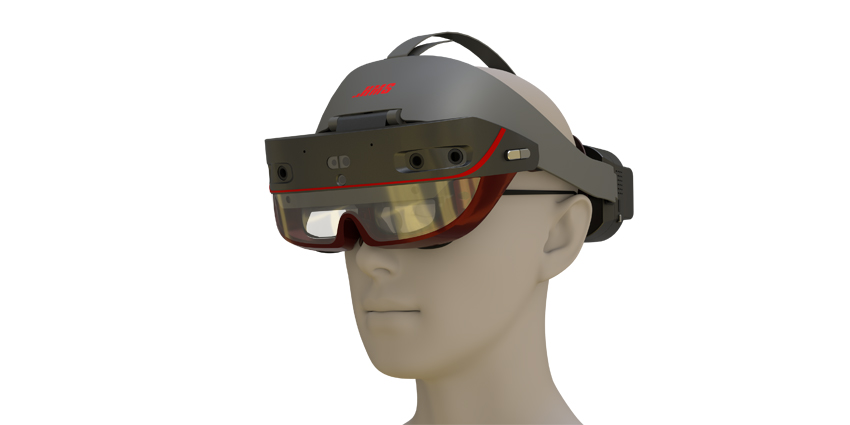AR or Augmented Reality is experiencing a period of phenomenal growth. Driven in part because many platforms (like Google and Apple) have already released simple AR toolkits for developers, applications are on the rise. Many companies also find AR to be more accessible than its other XR counterparts (VR and MR), because a headset won’t always be required.
Currently set to reach a value of around $340.16 billion by 2028, AR has a fantastic potential growth rate of around 43.8% CAGR. For people considering getting involved in the Augmented Reality market, now could be the perfect time to invest.
Today, we’re going to offer a beginner’s guide to the AR market, how it works, and what you need to know about this evolving technology.
Defining the AR Market
The AR market refers to a subsection of the Extended Reality ecosystem, designed to deliver immersive experiences to users. Within the AR market, users can get involved with various kinds of augmentation, including smartphone apps that “augment” surroundings through filters and content added to cameras, and smart glasses.
Augmented Reality often appears to be a lot more accessible for beginners than virtual reality. You don’t necessarily need a headset to get involved (although smart glasses are becoming more popular). Instead, anyone can use the AR Core, AR Kit, or other developer tools to design an augmented application that works on most modern smartphones.
Notably, with AR, the aim isn’t to replace the physical environment with a virtual alternative, like developers do in the virtual reality landscape. Instead, augmented reality is all about enhancing the world around you with additional content. Doing this requires the right combination of three things:
- Hardware: This is the equipment used for projecting the 3D and virtual images from the digital world into your physical world. Most commonly, AR hardware includes smartphones, and smart glasses. Both tools will come with a processor capable of running a specific AR app, a graphic processing unit, and sensors to help place the digital content of your AR experience in the right environment. Depth sensors, proximity sensors, light sensors, and more, all work together to make the experience more realistic.
- Software: The software in the AR market refers to the tools that developers use to help the AR application understand the physical world, and process experiences accordingly. Tools like AR Core and AR Kit are two examples of popular AR software. These tools come with solutions for environmental understanding, which allows your device to map its surroundings. AR software will usually also feature things like motion and light tracking, so the app and its experience can operate in real-time.
- Applications: The application is the tool that allows the AR software experience to function on the phone or within a set of smart glasses. Examples of common AR apps range all the way from the IKEA app where you can build your own AR kitchen, to Pokémon Go.
The Benefits of the AR Market
Augmented Reality has the potential to change a lot of different things in our day-to-day lives. Already, one seventh of the world’s population identify as AR users, with access to things like Snap chat, Instagram, and other AR apps.
Additionally, analytics groups like Forrester believe that smart glasses will take over the world, with 14 million employees set to use these devices by the time we hit 2025.
With AR, companies can build immersive onboarding experiences for customers, teaching them how to set up a new product or piece of equipment in real-time. We can use AR to try products before we buy them, or to help us find places with live-streamed directions that work alongside a smart phone’s camera and GPS capabilities.
Smart glasses in the workplace allow employees to stream information back to their colleagues and get feedback or support on solving problems in the moment. With a set of AR glasses, an employee could use voice technology to ask an assistant to display manual information to them when they’re making a fix. The same tools could also highlight the areas of a machine that need maintenance, to help speed up common tasks.
AR, like VR, originally gained a lot of attention in the immersive world as a new opportunity for entertainment. With AR technology, there’s no limit to the kind of impressive experiences that companies can build for their customers. You could even help your retail clients to self-serve by giving them access to virtual assistants whenever they scan a code with an AR app. However, AR also allows for better creativity and collaboration in the business world.
Through AR experiences, employees can work together on digital projects and ideas without wasting resources. AR construction drones can help architecture and building groups to map out opportunities and work on blueprints with speed. Companies like Longan Vision are even investing in AR tools that will allow firefighters to access information about a building when they’re attempting to save citizens from a fire.
Companies like Mercedes are even investing in AR technology for the development of better Formula 1 experiences, and teams are beginning to look into new training opportunities for teams through the magic of AR.
The Market for AR Continues to Grow
Augmented Reality represents one of the most exciting and accessible new markets in the XR environment. Now that we all have access to more AR development environments than ever before, there’s no limit to what we can unlock in this environment. Everyone seems to be experimenting with the next generation of smart glasses, and innovators everywhere are unlocking funding to design the a new era of AR experiences.
From AR headsets and visors for people in the military, to AR applications that improve experiences for customers in a more digital retail space, the opportunities are everywhere. If we keep heading in the right direction, we could even see the arrival of mind-reading AR accessories. If you’re not involved with the AR market yet, now could be the time to jump in.







